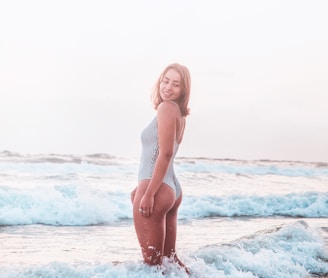Best UV Index for Tanning and How to Protect Your Skin
Discover the best uv index for tanning and learn essential sun protection tips to prevent skin damage. Must know information for your next trip to the beach.
OPINION


For sun-lovers across the globe, there's a certain allure to achieving a perfectly bronzed tan. But it's essential to understand that this should never come at the cost of your skin health. In our quest for that sun-kissed glow, let's explore the concept of the Ultraviolet (UV) Index, how it impacts tanning, and the importance of protecting our skin from the dangers of overexposure.
Understanding the UV Index
The Ultraviolet (UV) Index, a critical part of the conversation around safe sun exposure, is an international standard measurement designed to indicate the strength of sunburn-causing UV radiation at a specific location and time. Understanding this UV Index and how it relates to skin health, especially in terms of tanning, is crucial for anyone who wants to enjoy the sun responsibly.
At its core, the UV Index is a linear scale, generally starting at 1 and going up to 11 or more. Each number corresponds to a level of UV radiation and thus, a potential risk to the skin. A lower number indicates a lower risk of overexposure, while higher numbers point to a higher risk. It's worth noting that these values can sometimes exceed 11 during periods of intense UV radiation, often seen in geographical regions closer to the equator or at high altitudes.
When it comes to the question of the "best UV Index for tanning", it's crucial to debunk the common myth that a higher UV Index leads to a faster tan. In reality, a UV Index between 3 and 5 is considered "safer" for most people aiming for a tan, as it balances the desire for a bronzed look with the need to minimize skin damage. Even within this range, protective measures are essential. Sunscreen with a minimum Sun Protection Factor (SPF) of 15 should be worn, exposure during peak UV radiation hours (10 am to 4 pm) should be limited, and protective clothing is recommended.
But the UV Index isn't static, it changes throughout the day, peaking at solar noon and declining during the early morning and late afternoon hours. It also fluctuates throughout the year, reaching its maximum in the summer months. Weather conditions also significantly impact the UV Index. For instance, cloud cover can reduce UV radiation, but don't be fooled by a cooler day. UV radiation can still reach the earth's surface and cause skin damage, even on cloudy days.
Given this variability, it's crucial to keep track of the UV Index at your location. Many weather forecasting websites, apps, and local meteorological services provide real-time UV Index information. Use this valuable tool to guide your sun exposure decisions and protect your skin effectively.
In conclusion, understanding the UV Index and its relevance to tanning is a fundamental step in maintaining skin health. It's not just about finding the "best UV Index for tanning" but also knowing how to manage sun exposure responsibly. Using the UV Index as a guide, we can make informed decisions to balance our desire for a tan with the need to protect our skin.
Misconceptions about Sun Tanning
One of the common myths about sun tanning is the belief that soaking up more sun all at once will speed up the tanning process. The reality is that this approach is more likely to cause sunburn, an immediate sign of skin cell damage from excessive UV radiation. Over time, repeated exposure and consequent damage can lead to premature skin aging, irreversible eye damage, and skin cancers, including melanoma, the most fatal type.
Dangers of Sun Overexposure
The danger of overexposure to the sun is a topic that demands our attention. We're not just talking about temporary skin damage—overexposure has significant long-term effects. Prolonged exposure to strong sunlight can cause skin cells to mutate and potentially develop into skin cancer. Alarmingly, more people are diagnosed with skin cancer annually in the U.S. than all other cancers combined. The majority of these cases are directly attributable to UV exposure.
Finding a Balance: Enjoying the Sun Safely
So, is there a way to balance our love for the sun with the stark potential risks? The answer lies in being informed and vigilant. It's crucial to seek shade during the sun’s peak intensity hours, especially when the UV Index is 6 or above. No matter what the UV Index indicates, always wear broad-spectrum, water-resistant sunscreen with an SPF of 30 or higher, and reapply every two hours or immediately after swimming or excessive sweating.
However, sunscreen isn't your only defense. Embrace sun-protective clothing like long-sleeved shirts, pants, wide-brimmed hats, and sunglasses with UV protection. Some clothing brands even offer garments with an Ultraviolet Protection Factor (UPF) rating to maximize your safety.
Conclusion: The Path to a Healthy Tan
While our quest may be to find the "best UV Index for tanning," it's about more than a golden glow—it's about understanding sun exposure, ensuring our skin's health, and tanning responsibly. Remember, there are safe alternatives, like sunless tanning products, that can offer a bronzed appearance without any UV exposure risk. Ultimately, embracing informed decisions, protective measures, and considering sunless options lead to the healthiest tan. Well-protected, healthy skin is the real foundation of beauty and radiance. Step out, enjoy the sun wisely, and keep your skin's wellbeing as a top priority.





